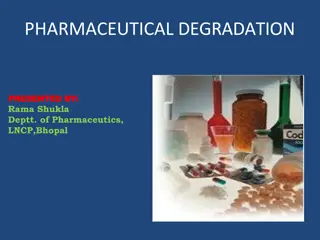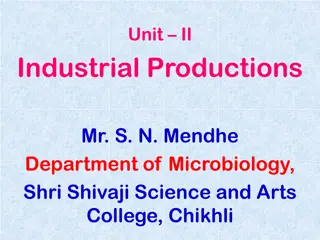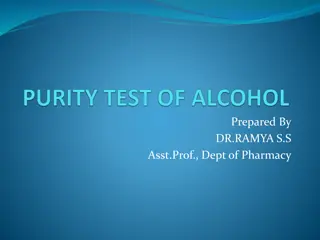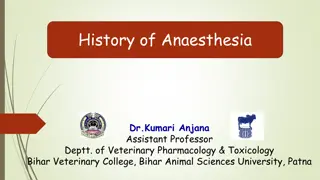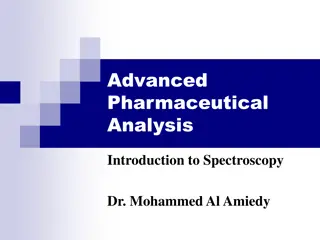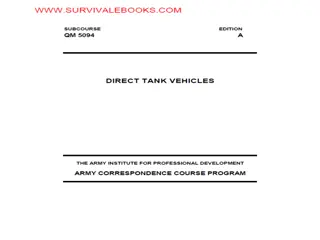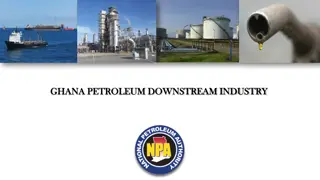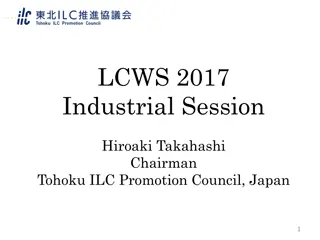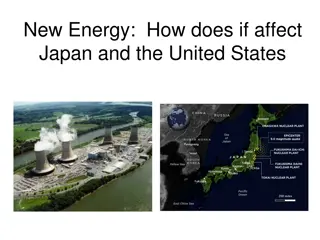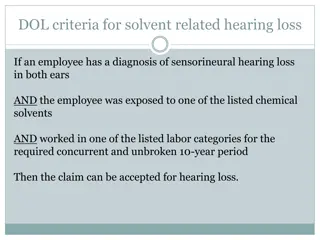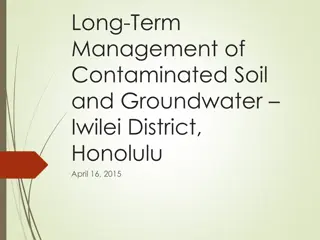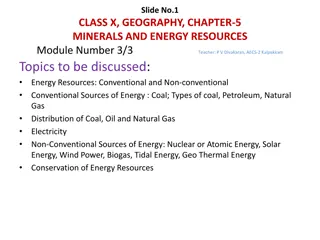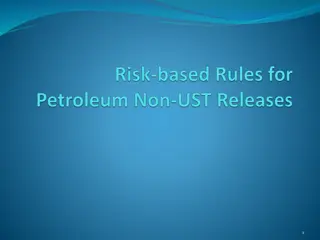Toxicological Review of Ethyl Tertiary Butyl Ether (ETBE) by Japan Petroleum Energy Center (JPEC)
The Japan Petroleum Energy Center (JPEC) conducted extensive studies on Ethyl Tertiary Butyl Ether (ETBE) to assess its toxicity, carcinogenicity, and health risks. The research concluded that the use of 7% ETBE-blended gasoline in Japan does not pose significant human health risks through oral or inhalation exposure. JPEC ensured the credibility of all studies, including carcinogenicity and genotoxicity assessments, in accordance with OECD principles of GLP. The review highlighted similarities in risk assessments between JPEC and external reviews, with genotoxicity studies yielding negative results. Inhalation exposure to ETBE was found to be safe for humans based on risk assessment reports.
Download Presentation

Please find below an Image/Link to download the presentation.
The content on the website is provided AS IS for your information and personal use only. It may not be sold, licensed, or shared on other websites without obtaining consent from the author.If you encounter any issues during the download, it is possible that the publisher has removed the file from their server.
You are allowed to download the files provided on this website for personal or commercial use, subject to the condition that they are used lawfully. All files are the property of their respective owners.
The content on the website is provided AS IS for your information and personal use only. It may not be sold, licensed, or shared on other websites without obtaining consent from the author.
E N D
Presentation Transcript
1 JPEC Public Comments EPA-HQ-ORD-2009-0229 Docket ID NO. EPA-HQ-ORD-2009-0229 PUBLIC COMMENTS BY JPEC FOR TOXICOLOGICAL REVIEW OF ETHYL TERTIARY BUTYL ETHER [ PUBLIC COMMENT DRAFT ] IRIS Public Science Meeting EPA Conference Center, Arlington, Virginia October 26, 2016 Fukumi Nishimaki, Ph.D., Senior Researcher Japan Petroleum Energy Center (JPEC)
2 JPEC Public Comments EPA-HQ-ORD-2009-0229 JPEC Comments ETBE is synthesized from bio-ethanol and used as an bio-fuel added to gasoline in Japan to reduce CO2 emissions and support the objectives of the Kyoto Protocol. JPEC conducted many studies to evaluate the toxicity, carcinogenicity, and potential health risks of ETBE, between 2006 and 2010, commissioned by and under the guidance of Ministry of Economy, Trade & Industry of Japan (METI). The resulting risk assessment, performed under the guidance of an independent committee of academic and government experts, concluded that the use of 7% ETBE-blended gasoline does not pose a human health risk by either the oral or inhalation route of exposure.
3 JPEC Public Comments EPA-HQ-ORD-2009-0229 JPEC Comments We assure credibility of the data of all studies conducted in JPEC ETBE projects. The 2-year carcinogenicity studies [Drinking water and Inhalation], 2-stage carcinogenicity studies and genotoxicity studies were implemented in accordance with the OECD principles of GLP(OECD1998).
4 JPEC Public Comments EPA-HQ-ORD-2009-0229 JPEC Comments In Toxicological review of ETBE (Public Comments Draft) , there are some differences on aspect of ETBE hepatotumorigenicity MOA with JPEC, however, The RfD/RfC for ETBE and the consideration on Evidence of human carcinogenicity almost coincide with that of JPEC s view and conclusion. ETBE Genotoxicity studies conducted by JPEC were negative in the results.
5 JPEC Public Comments EPA-HQ-ORD-2009-0229 ETBE Inhalation Exposure Level and Health Risk in Humans (based on ETBE risk assessment report in ETBE Risk Assessment Study by JPEC (March 2008)) Opened at JPEC English home page; http://www.pecj.or.jp/english/news/pdf/b-2-8.pdf ETBE Exposure level and Health Risks 7% ETBE blended with gasoline Exposure level: ETBE concentration in environment estimated by simulation Cair = Maximum atmospheric ETBE concentration Cair = 38 g/m3 ( 0.009ppm) NOAEL in rats NOAEL : Kidney, urotherial hyperplasia =2,090,000 g/m3 Kidney, urothelial hyperplasia (2-year inhalation carcinogenicity) NOAEL = 500ppm =2,090mg/m3 Liver adenoma = 6,270,000 g/m3 Liver adenoma (2-year inhalation carcinogenicity study) NOAEL =1500ppm =6,270mg/m3 MOE = 55,000 MOE =165,000 MOE (Margin of Exposure) = NOAEL* /Cair CONCLUSION : Inhalation exposure to ETBE does not pose a health risk to humans.
6 JPEC Public Comments EPA-HQ-ORD-2009-0229 Personal exposure level of ETBE at a gasoline stations* *Yoko Nagataki et al (Keio University Medical School ):Annual Meeting of Japan Society of Occupational Health (2010), Vol 83, P614 Job Fueling TWA(ppm) 8h-TWA:0.071 (Max 0.246) Notes A. Gas station crews B. Tank truck drivers Gasoline blended with 7%ETBE Unloading 1h-TWA:0.298 (Max 1.098) B A
7 JPEC Public Comments EPA-HQ-ORD-2009-0229 Thank you very much for your attention.






